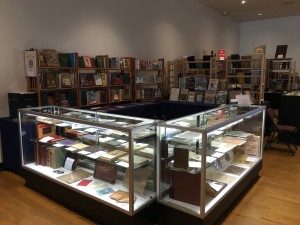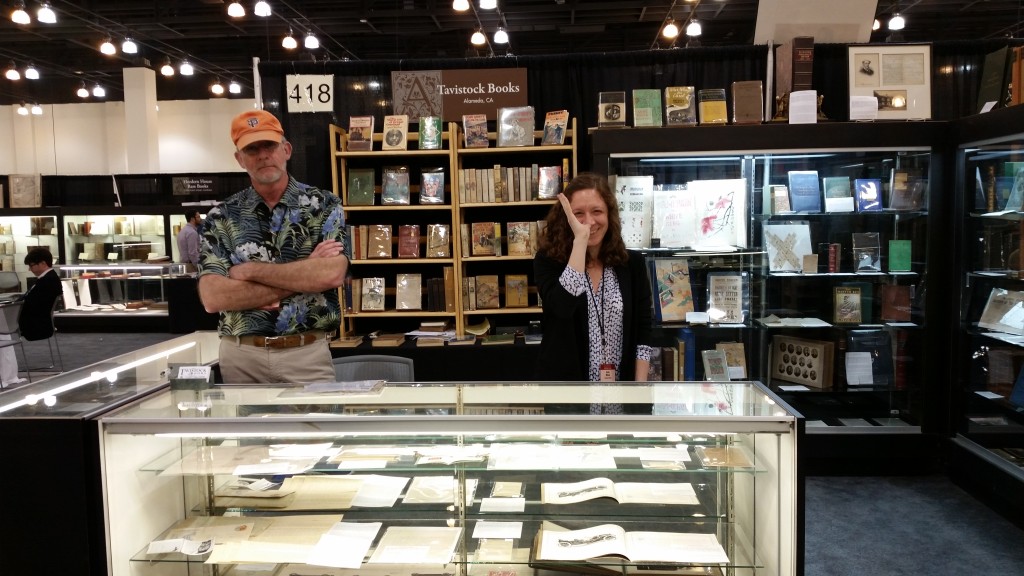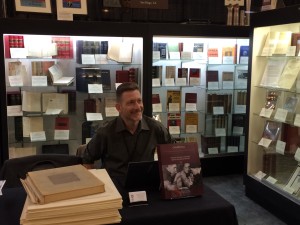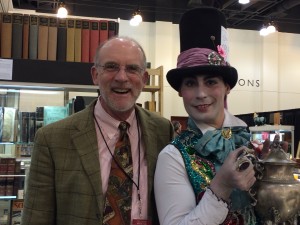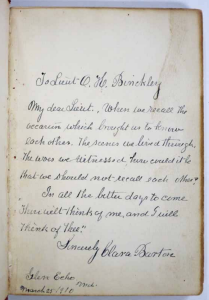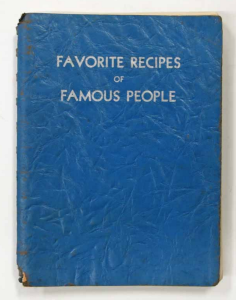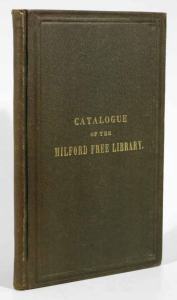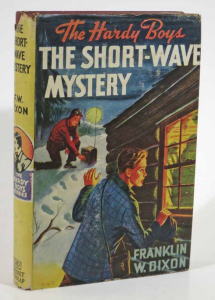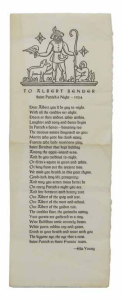Our main lady, the lovely Kate Mitas, reports on the recent Sacramento Antiquarian Book Fair. That’s not all… perhaps I should call it (for Tavistock Books, at least) the most recent and successful Sacramento Antiquarian Book Fair. Stay tuned!
By Kate Mitas
Maybe I’m wrong, but I’m willing to bet that by now, if you’ve been following Tavistock’s less than stellar performance at the past three book fairs, you probably don’t really give a damn about the progress of this latest fair. All you really want to know is if we finally, finally managed to have a decent book fair, or if we’ve had to slink away with our tail between our legs yet again.
Now, if this were any other book fair, knowing that wouldn’t actually stop me from forcing you to sit through this entire blog, anyway, while I regaled you with comic misadventures and newbie impressions until, at the very last minute, revealing whether or not we’d succeeded. But just this once, I’ll spare you the suspense.
Because this isn’t just any old book fair: at long last, and for the first time ever in my short antiquarian bookselling career, Tavistock Books actually had a good book fair.
Yeah, you read that right: we had a good book fair! We sold books! And we even made some money! Hurrah!
Well, that is to say, we mostly had a good book fair. And then again, we almost didn’t. Because, in fact, we nearly gave up before we began, and the good ship Tavistock, languishing in the doldrums for so long, seriously considered dropping out of the fair circuit altogether.
See? There’s always a story to tell.
So, for any who are still curious, procrastinating, or otherwise willing to fritter away a few more minutes of your time: here is your tale of book fair woe and triumph, as soberly and matter-of-factly told as I can manage right now.
Once upon a time, in a land rather a lot like this one, but slightly more drought-stricken, a wee lass of a bookseller-in-training traipsed off to Sacramento to work her first-ever booth at an antiquarian book fair. Let’s say, for the sake of this story, that it was a bright September afternoon in 2015, and that, although the hills and fields were brown and had been for some time, the sky was blue and cloudless and full of promise. This young bookseller and her not-so-young boss barreled up Interstate 80 in the shop’s trusty van, which was filled with what seemed like good candidates for a regional book fair: loads of Californiana and Western Americana, interesting ephemera, and, of course, helpings from some of the loveliest books in the shop’s specialties. The iron mesh door behind the front seats rattled quietly as they drove, and the side panels of the folded wooden bookcases in back occasionally let slip a muted clack whenever the van hit a bump. These sounds were oddly soothing to the young bookseller’s jangling nerves.
Our heroine was but five weeks into the antiquarian book trade, then, and ignorant of the sometimes cruel vagaries of the book fair circuit. She had high hopes for the shop’s success at the fair, though she kept them to herself, not wanting to jinx it. And yet, as perhaps a few of you may recall, those hopes were thoroughly quashed by the nearly unrelenting cacophony of crickets in the Tavistock booth that weekend.
Three mournful, but plucky, blogs, two increasingly painful unsuccessful book fairs, and one wrecked van later, and the mood in the shop during the days leading up to this past weekend’s biannual Sacramento Antiquarian Book Fair was decidedly grim. A kind of preliminary dread set in. There was talk of abandoning the fair circuit. All of our books looked crummy. Never mind that a second look might at them might steal our hearts all over again — no customer would want them. It rained all week, adding to the gloomy atmosphere. In short, we had the pre-fair blues.
Nevertheless, despairing naps and weeping under one’s desk are generally frowned upon at work, so, naturally, we went through the motions of packing and preparing. And while we were doing so, it occurred to me that if we kept on this way, we were definitely going to have another bad book fair. And I wasn’t having any of it, not this time.
“Hey, Vic,” I announced, “you know this is going to be my first successful book fair, right?” (This is true — you can ask him.)

The lucky title that perhaps played a hand in Tavistock Books’ successful Sacramento fair! See it here>
He seemed doubtful. And who can blame him? But instead of packing “The Dying Californian,” the songster that had served as my first Sacto fair’s sorry mascot, I decided to bring along our copy of Fred Fearnot and the Errand Boy; or, Bound to Make Money. Sure, maybe it was silly, but maybe it’d bring us a bit of much-needed luck, too. Plus, if things worked out, it’d make for a good blog title. “Kate Fearnot” has a certain ring to it, after all . . .
Okay, if I’m honest, I can’t really take credit for the success that followed. Clouds continued to loom as we left the city, but the sun broke through around Vacaville. Thanks to Jim Kay’s tireless efforts, booth setup went smoothly, for the most part, and any flagging spirits were topped-up by free pizza in the afternoon. The company of what has become the usual crowd on the book-fair circuit was splendid, as always, and even Ms. P. (aka Margueritte Peterson) made an appearance, and may yet have room in her busy schedule for new clients for her social media/ catalogue design business. The crowd trickled in early Saturday morning, then grew quickly and remained steady throughout the day, and although not all of the booksellers I spoke with were happy, few seemed to regret having made the trek. At the Tavistock booth, we sold a range of material to both customers and dealers, ranging from a $9 children’s book (haggled down from $10 out of what, I’m sure, was merely compulsive bargaining) to considerably more expensive items, and everyone seemed happy with their purchases. Even the buying was pretty good for us.
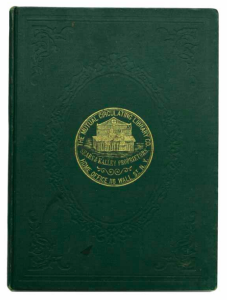
Kate hasn’t seen Vic so excited a book since she’s been here! He says he’s never seen a dedicated lending library binding! More details coming soon…
I wish I could say that it was a huge success, of course, making up for the preceding lackluster showings and then some. Certainly not enough to merit a Kate Fearnot blog title. Are they worth it then, these fairs? All that effort and agony, all the expense and risk just to gather, however briefly, with colleagues and book lovers of all stripes? Are they bonanzas, migratory communities, or refuges of a book trade that keeps losing physical stores? And what would we do, how would we swap knowledge and ideas and, it goes without saying, books, if we didn’t do book fairs?
Frankly, I don’t know the answers to these questions. What I do know is that I have a catalogue to get ready for next week, and a stack of cool things to catalogue for it, and a pile of fair items to finish putting away, and a tally sheet on my desk pointing out our modest profit, in black ink, for the first time. It feels an awful lot like being a bookseller.

